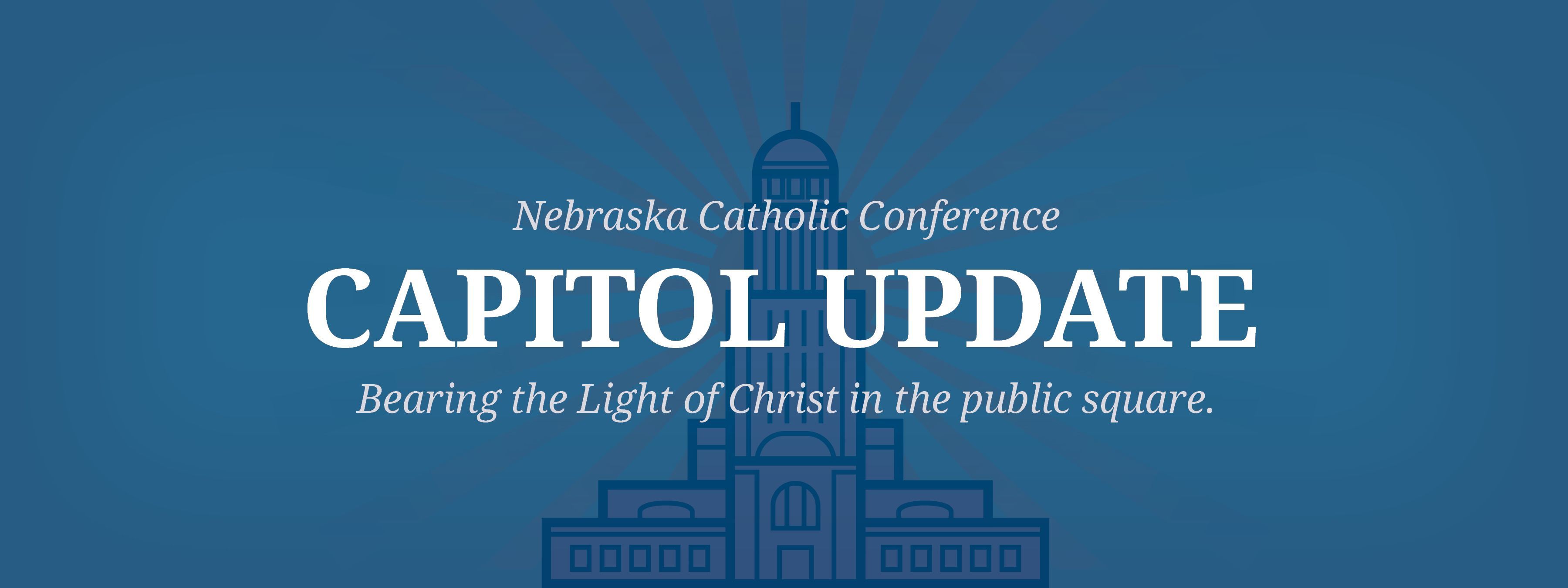I had the opportunity to be in Washington, D.C. Dec. 1 when the U.S. Supreme Court heard oral arguments in Dobbs v. Jackson Women’s Health Center. After spending much of the morning at a rally on the Court steps with other pro-lifers, I settled into a friend’s office to listen to oral arguments for the case that has become our best opportunity to overturn Roe v. Wade in nearly 30 years.
Roe, which forced legal abortion on demand on all 50 states in 1973, was reconsidered by the Supreme Court in 1992 in Planned Parenthood v. Casey. In Casey, as you may remember, the Court modified Roe, but upheld what it described as Roe’s “essential holding”—unencumbered access to abortion for any reason before the point of fetal viability (itself a moving target, usually considered to be somewhere between 22 and 28 weeks’ gestation). This decision further entrenched the Court’s legal abortion mandate, a discouraging defeat for pro-life advocates.
You may also remember that in 2011, Nebraska became the first state to pass a bill that made abortion illegal at 20 weeks post-fertilization. At the time it was passed, it was an attempt to get the Court to reconsider Roe and Casey in light of the evidence that preborn children can feel pain at that point in their development. However, abortionists did not challenge the law—nor the 20-week bans later passed by several other states—and thus the Court never considered it.
Mississippi upped the ante in 2018 by passing a law that protects preborn children from abortion beginning at 15 weeks’ gestation. Unlike Nebraska’s 20 week bill, Mississippi’s law was challenged by abortionists. It was struck down by the lower courts as an “unconstitutional” restriction on the “right to abortion” before viability.
Most expected the 15-week bill to die there. Against those expectations, however, the Supreme Court decided after a long delay to grant Mississippi’s appeal and hear the case. That set up the showdown that occurred at the Court this Dec. 1. Standing off were Roe and Casey—an untouchable “right to abortion” before fetal viability—versus the long-suppressed right and obligation of the people of a state to protect their own most vulnerable from lethal violence.
We will not know the outcome until the Court announces its decision next summer. It would be unwise, moreover, to confidently predict the future. But I would like to offer a few observations that give us some reason to hope for a just outcome.
Leading up to this case, most “court watchers” divided the Court into three rough “camps”—the three justices almost certainly willing to override Roe v. Wade, the three almost certainly not willing to overturn a so-called right to abortion, and three of whom we could not quite be sure. The first camp consists of Justices Thomas, Alito, and Gorsuch. The second consists of Justices Sotomayor, Breyer, and Kagan. And the last camp—the wild cards—includes Chief Justice Roberts and the two newest members of the Court, Justices Kavanaugh and Barrett.
In their questioning of the lawyers at oral argument, there were no surprises from the first two camps. Justices Thomas, Alito, and Gorsuch all seemed very willing to overturn Roe, asking very tough questions of the pro-abortion lawyers and pressing them closely on the (il)logic of their position. Justice Sotomayor, on the other side, did not so much ask questions as advocate for abortion. Justice Breyer delivered some rather long, speculative remarks about whether the Court could retain its reputation in the public eye if it succumbed to political pressure and overturned Roe. Justice Kagan asked few questions.
It was the “wild cards,” and what they said, that piqued the most interest. Chief Justice Roberts has a long track record of trying to find a “middle road,” especially on legal issues that are deemed socially controversial. The very good news to take away from Dec. 1 is that he understands the totally arbitrary nature of Casey’s “viability line” and may be willing to uphold Mississippi’s 15-week law. The less-good news is that it seemed he might be searching for a solution less than the full overturn of Roe v. Wade. What that less-than-full “solution” would be is difficult to predict.
For his part, Justice Kavanaugh seemed to indicate, in his questioning, a view that the Constitution is “silent” on the issue of abortion, and that it is, therefore, outside the authority of the Court to dictate how the states regulate it. This is consistent with public remarks he has made about his judicial philosophy before he became a U.S. Supreme Court justice. While this view offers no federal Constitutional protection to unborn persons, it would still, if followed by the Court, overturn Roe and restore the right of Nebraskans to legally protect children from abortion in our state.
Last but not least of the wild card triumvirate is Justice Amy Coney Barrett. Justice Barrett pushed back on Justice Breyer’s suggestion that it would be appropriate for the Court to consider how the public would react to Roe’s overturn. She also asked questions that seemed to indicate skepticism about whether abortion really is necessary for women to enjoy equal participation in society—a key argument of abortionists’ lawyers. In light of the fact that we still know very little about Justice Barrett as a judge, her pursuit of those lines of reasoning should, I think, encourage us to be cautiously optimistic about how she will approach this case.
Parsing those comments and questions, I find much to be encouraged about. Roe may well be, at long last, on its way out. But two things are essential to remember: first, the reality of human weakness; and second, the notorious unreliability of anything said in these proceedings to predict how the Court will rule in six or seven months. In the interim, please persevere in prayer, every day, for these justices. God grant them wisdom and courage, and His will be done.







